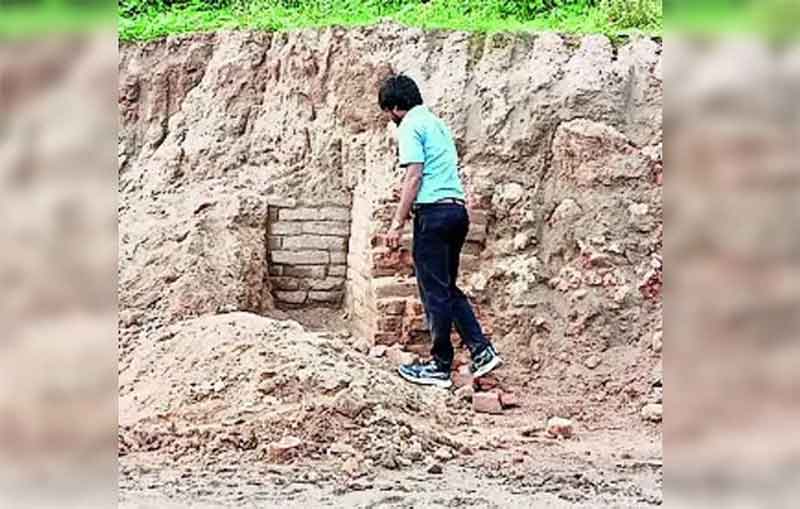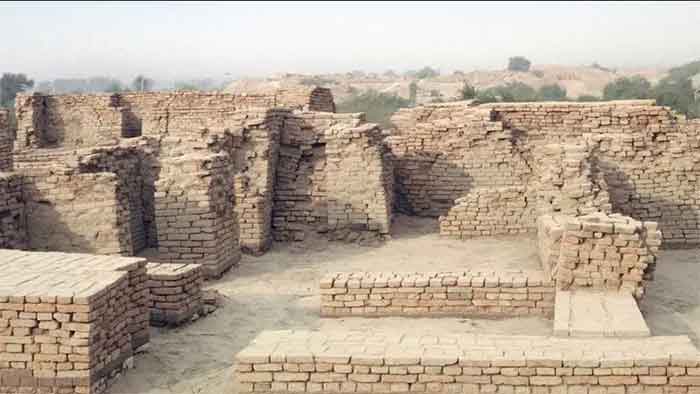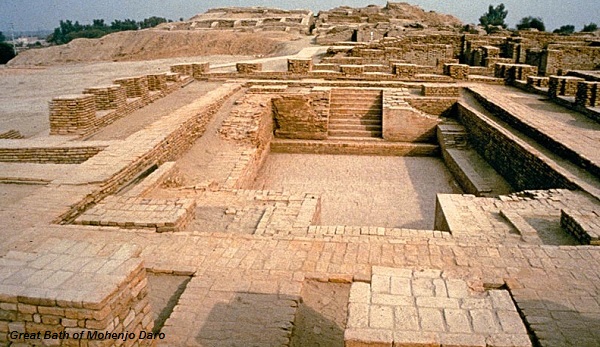While the Prime Minister was highlighting India’s commitment to the conservation of ancient heritage, JCBs were flattening an archaeological mound outside Pithori Darwaja containing precious archaeological evidence in his hometown, Vadnagar in Gujarat

Letter addressed to Prime Minister Modiji on the steps to be taken to protect heritage, both archaeological and geological
To
Shri Narendra Modi
Prime Minister
Dear Shri Narendra Modiji,At the recently held meeting of the
46th Session of the World Heritage Committee (WHC) of UNESCO, you rightly emphasised the need to respect and conserve heritage as “Heritage is not just history, but shared consciousness of humanity” and even announced a $1 million contribution to the UNESCO World Heritage Centre.
It is ironic that, around the same time, in Vadnagar, your own home town having an archaeological site of 2,300 years of vintage, should sadly witness JCBs mercilessly flattening an archaeological mound outside Pithori Darwaja located 1 km away from the primary excavation site near Sharmishtha lake (https://timesofindia.indiatimes.com/city/ahmedabad/jcbs-flatten-2000-year-old-archaeological-site-in-vadnagar/articleshow/111873497.cms)
Such destruction of potential archaeological evidence would not have happened had the Gujarat government cared to invoke its authority under the Gujarat Ancient Monuments and Archaeological Sites and Remains Act, 1965 to notify all such sites of historical importance as “protected sites” and enforced the statutory provisions in time and your own government at the Centre had taken adequate steps to strengthen and enable the Archaeological Survey of India (ASI) to conduct a quick survey of all such important sites and their surroundings, by using cost-effective, non-invasive, ground-penetrating techniques such as application of satellite imagery analysis, geo-physical investigation etc. for exploring archaeological evidence lying hidden under the ground.
In fact, India has excellent indigenous capabilities in applying such advanced techniques as evident from studies conducted by Indian experts on Nalanda (http://eprints.nias.res.in/1135/) and Bodh Gaya (https://timesofindia.indiatimes.com/india/satellite-images-reveal-archaeological-wealth-beneath-bodh-gayas-sacred-site/articleshow/111712577.cms), where such studies have unearthed new archaeological evidence, hitherto unknown, that would add to our knowledge of ancient history. The Haryana government is collaborating with ASI to use a similar non-invasive, ground-penetrating technique to explore the archaeological site at Agroha (https://economictimes.indiatimes.com/news/india/haryana-govt-initiates-ground-penetrating-radar-survey-at-agroha-archaeological-site/articleshow/108430198.cms?from=mdr)
The ASI, set up in 1861, is one of the oldest institutions in the country with a storehouse of knowledge on archaeology and has professional capabilities comparable to its counterparts anywhere else in the world.
Had your government enabled the ASI to collaborate with other Indian public sector institutions like ISRO/ National Institute of Advanced Studies (NIAS), Bengaluru and others to work jointly on application of advanced techniques of investigation, by allocating enough funds to ASI, strengthened it institutionally and encouraged it to go all out to explore existing and new sites, ASI would have uncovered many more locations of invaluable archaeological evidence which could add to our knowledge of history and cultural traditions.
Sadly, neither did the Finance Minister’s Budget speech make any mention of “heritage” nor the Budget allocations for ASI reflect your government’s commitment to respect/ conserve heritage by strengthening the ASI. Compared to the huge subsidies provided in the budget for profit-earning private industry, ASI’s needs are small. Had your government been willing, it could have readily enhanced ASI’s Budget to enable it to meet the challenge of using advanced techniques to protect existing sites and discover new ones.The Parliamentary Standing Committee on Transport, Tourism and Culture on “Functioning of Archaeological Survey of India” presented a report on 21-9-2023 to the Rajya Sabha referred to 50 “missing archaeological sites“, out of 3,679 monuments and sites notified by the government as of national importance under the provisions of the Ancient Monuments and Archaeological Sites and Remains Act,1958 and made several important recommendations to strengthen the ASI (https://asi.nic.in/pages/Monuments#:~:text=At%20present%2C%20Archaeological%20Survey%20of,%2D%20Circles%20and%20Mini%2Dcircle). Unless immediate steps are taken to enable the ASI, many more notified sites may disappear in the coming years, due to urbanisation and real estate pressure.
Heritage once lost cannot be restored.
ASI & Amaravati Buddhist archaeological site:
While your government has allocated Rs 15,000 crores to AP government to develop its capital city at Amaravati, hardly 25 km away, the ancient Amaravati Buddhist archaeological site from which the new capital derives inspiration, is subject to damage by real estate activity. ASI under whose control the Amaravati site is, with its meagre resources, finds it difficult to protect the existing Amaravati site and its surrounding area having potential archaeological evidence. It is from Amaravati and other Buddhist hubs along the east coast of India that ancient Buddhist traditions spread far and wide, to SouthEast Asia and even China. Protecting such sites would strengthen India’s traditional links to the East.
Ancient Buddhist archaeological site at Thotlakonda near Visakhapatnam:
The credit for the discovery of Thotlakonda and a few other Buddhist sites nearby should truly go to the Indian Navy, whose reconnaissance teams detected them on hill tops and brought the same to the notice of the State archaeology officials.
As in the case of several similar sites, the Thotlakonda site too has come under a serious threat, perhaps encouraged by successive governments, culminating in the previous State Government, yielding to pressure from real estate developers, denotified around 96% of the 3,148 acres originally notified as a protected site in 1978, despite the fact that, in 2000-2003, a research scholar discovered 134 new archaeological sites, containing 328 individual archaeological features in the area that stands denotified today.
At the instance of the AP High Court whom the local heritage activists approached, ASI has been asked to explore the denotified portion of that site but, strapped for funds, it is unable to adopt satellite imagery investigation and other advanced techniques as cited above to do full justice to court’s requirement.
It is for protecting invaluable heritage sites such as Vadnagar in Gujarat, Bodh Gaya and Nalanda in Bihar, Amaravati, Thotlakonda and a host of other important sites in AP and other States that the laws relating to conservation of archaeological sites need to be enforced strictly and ASI’s hands strengthened.
Geo-heritage sites:
There are 32 geo-heritage sites notified by the GSI (https://pib.gov.in/newsite/printrelease.aspx?relid=137573). All of them have immense geological significance and some even archaeological value. Though the Central and the State governments are mandated to conserve heritage under Article 49 of the Constitution, there is no law as yet enacted to enable authorities to provide adequate statutory protection to them.
To cite one example of a Geo-Heritage site, we have near Visakhapatnam, a GSI-notified site, “Erra Matti Dibbalu (EMD)- the dissected and stabilized coastal red sediment mounds“, which, as in the case of archaeological sites, is being wantonly vandalised today by real estate developers with some local officials in collusion with them. Such undesirable real estate activity has strategic implications for the Indian Navy whose facilities are located close to the above cited geo-Heritage site.
Had the Central government enacted a law to protect such sites, it could have readily provided protection for them.
In fact, though such a law had been proposed by the civil society of Visakhapatnam a decade ago, the Ministry of Mines belatedly came up with a Geoheritage Sites and Geo-relics (Preservation and Maintenance) Bill in 2022 but the same is yet to be introduced in the Parliament for enacting it as a legislation. For protecting geo-heritage, enactment of such a law is a necessity.
Against the above background, I have the following specific suggestions:
- Strengthen the ASI by enhancing its budgetary allocation to enable it to collaborate with other Indian public sector technology-based institutions to be able to adopt non-invasive, cost-effective techniques of archaeological exploration
- Order the ASI to undertake a quick nation-wide exploration exercise through such techniques to explore potential micro-sites around the existing archaeological sites and explore newly discovered sites, to be able to widen the archaeological heritage base of India
- Ensure strict enforcement of both Central and State legislations on protection of archaeological sites
- Introduce the Geoheritage Sites and Geo-relics (Preservation and Maintenance) Bill in the Parliament at the earliest and, meanwhile, advise the concerned agencies of the Centre and the States to protect geo-heritage sites under environment-related laws and other laws as applicable
Subscribe to Our Newsletter
Get the latest CounterCurrents updates delivered straight to your inbox.
In your words at UNESCO’s World Heritage Committee meeting, “We need to harness this potential of heritage for the betterment of the world. We need to connect hearts through our heritage” (https://www.youtube.com/watch?v=gUz__8Edp-E). I am sure that you will consider the above suggestions and take necessary action to protect heritage, both archaeological and geological.
If you take the lead in that direction, the States will follow.
Regards,
Yours sincerely,
E A S Sarma
Former Secretary to the Government of India
Visakhapatnam















































